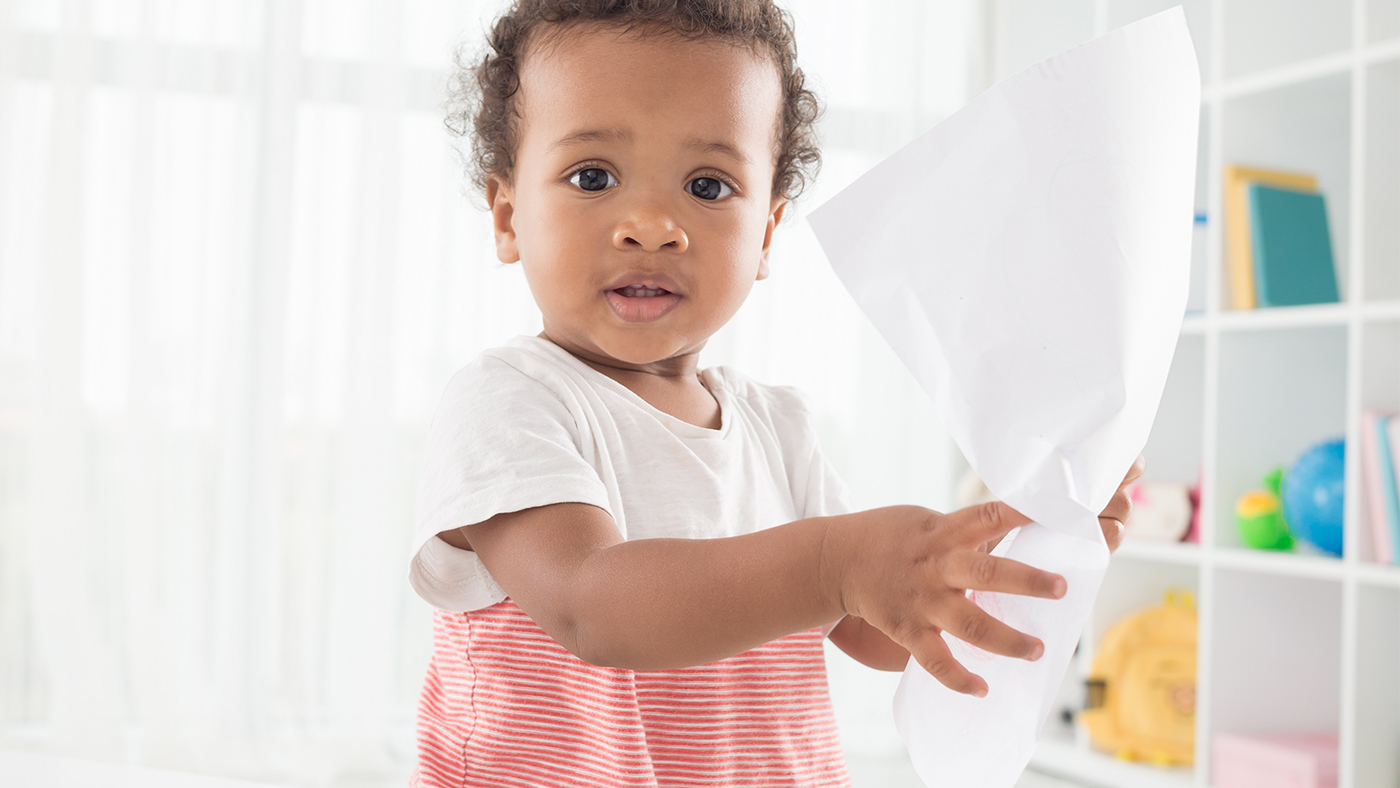Ripping up the rule book – nine reasons why tearing paper is great!

When a baby tears a sheet of paper, the tiny muscles in their hands gain strength and endurance. They're also having to use both hands at the same time to complete an action – a skill called bilateral coordination. Although you will need to set boundaries around exactly what bits of paper your baby is tearing up, there are many reasons that the actions themselves should be encouraged with a pile of scrap paper.
Your baby's bilateral coordination and their fine motor muscles are still developing. These skills will eventually help when doing tricky tasks like fastening a zip, putting on their own shoes and cutting with scissors. These and many more life skills require the hands to work in unison, while doing separate actions, and for your baby playing is a perfect way to practise.
Tearing paper is a simple way to play and can be a game which you and your baby return to again and again.
Nine areas of control are developed from one simple task, these are...
- Hand-eye coordination – using eyes and hands to complete a task.
- Bilateral coordination – using both sides of the body to achieve a goal.
- Pinch strength – force exerted when using index finger and thumb.
- Arch development – these are the muscles in the palm of your hand, important for movement of fingers and strength of hands overall.
- Open thumb web space – this part of the hand is important for understanding how to grasp and control tools.
- Shoulder and forearm stability – the ability to pull together muscles on either side of the shoulder joint. This allows the arm to be kept in a variety of positions while the forearm and hand perform a task.
- Precision and refined grasp – being able to use the thumb and index finger together to make controlled finger movements.
- Motor planning – the ability to think about and organise the body’s actions to achieve something.
- Proprioceptive input – this is the sense of where our body is in relation to the rest of the world. It is necessary for our bodies to understand both movement and touch information by doing tasks that demand strong resistance to the muscles and joints – like tearing paper!